8 wonders of nature that are actually man-made
Categories: News | Photo School | Travel | World
By Angela https://pictolic.com/article/8-wonders-of-nature-that-are-actually-man-made.html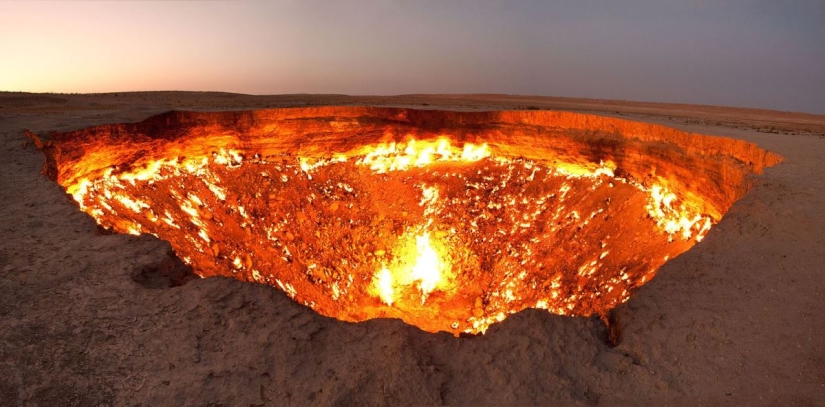 1. Darzava or "Gates of Hell" is a gas crater in Turkmenistan that has not stopped burning for 40 years. This "great" creation is the work of Soviet engineers who were looking for oil in the 70s of the last century. (Photo: Tormod Sandtorv/Flickr.com).
1. Darzava or "Gates of Hell" is a gas crater in Turkmenistan that has not stopped burning for 40 years. This "great" creation is the work of Soviet engineers who were looking for oil in the 70s of the last century. (Photo: Tormod Sandtorv/Flickr.com).
During the drilling of wells, part of the soil, under which a large gas field turned out, failed. Fearing toxic fumes, Soviet engineers did nothing smarter than setting the gas on fire to get rid of it. So it has been burning for four decades, never ceasing to horrify and remind how destructive people can be.
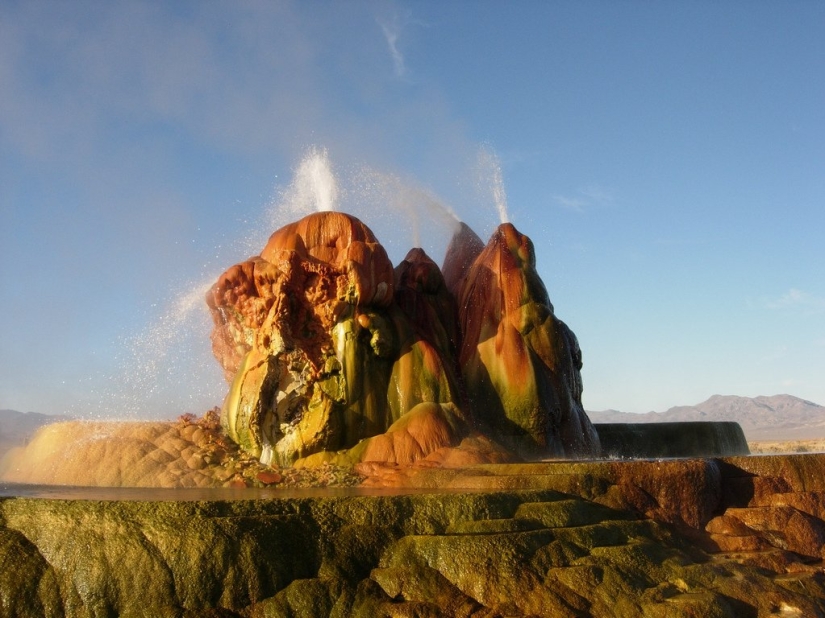 2. Fly Geyser or Fly Geyser. In fact, this is a permanent thermal spring, which again appeared due to human intervention. In 1916, drilling work was carried out in that place, and in the 60s, groundwater with the inclusion of a mineral from wells broke to the surface, creating this amazing creation. (Photo: Ken Lund / Flickr.com).
2. Fly Geyser or Fly Geyser. In fact, this is a permanent thermal spring, which again appeared due to human intervention. In 1916, drilling work was carried out in that place, and in the 60s, groundwater with the inclusion of a mineral from wells broke to the surface, creating this amazing creation. (Photo: Ken Lund / Flickr.com).
 3. The waters of Rio Tinto in Spanish Andalusia are the color of blood. This water has a pH of 2, which makes it almost impossible for most of the organisms that exist on Earth to live in it. In fact, this river is poisonous. But why, you ask? The thing is that for centuries copper, silver, gold and other minerals were mined in this region, as a result of which the river was polluted. The red color of its waters is due to copper, which is contained in it in large quantities. (Photo: RioTinto2006/WikimediaCommons).
3. The waters of Rio Tinto in Spanish Andalusia are the color of blood. This water has a pH of 2, which makes it almost impossible for most of the organisms that exist on Earth to live in it. In fact, this river is poisonous. But why, you ask? The thing is that for centuries copper, silver, gold and other minerals were mined in this region, as a result of which the river was polluted. The red color of its waters is due to copper, which is contained in it in large quantities. (Photo: RioTinto2006/WikimediaCommons).
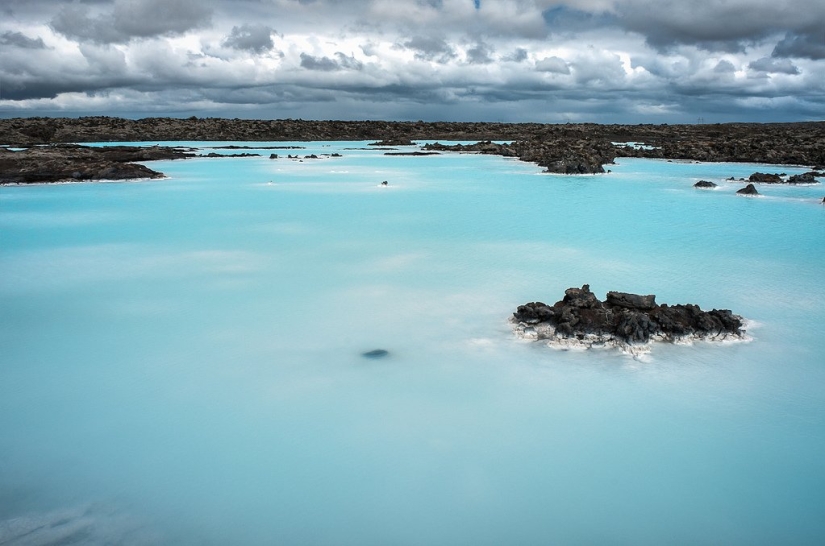 4. The Blue Lagoon in Iceland is a large pool filled with salty geothermal water. The warm lagoon appeared thanks to human activity, namely, the nearby Svartsengi geothermal power plant, which needed somewhere to store excess pumped water. The Blue Lagoon is close to Iceland's international airport and is one of the island's biggest tourist attractions. It is believed that its highly mineralized water has a beneficial effect on the skin. (Photo: Michelle Lee / Flickr.com).
4. The Blue Lagoon in Iceland is a large pool filled with salty geothermal water. The warm lagoon appeared thanks to human activity, namely, the nearby Svartsengi geothermal power plant, which needed somewhere to store excess pumped water. The Blue Lagoon is close to Iceland's international airport and is one of the island's biggest tourist attractions. It is believed that its highly mineralized water has a beneficial effect on the skin. (Photo: Michelle Lee / Flickr.com).
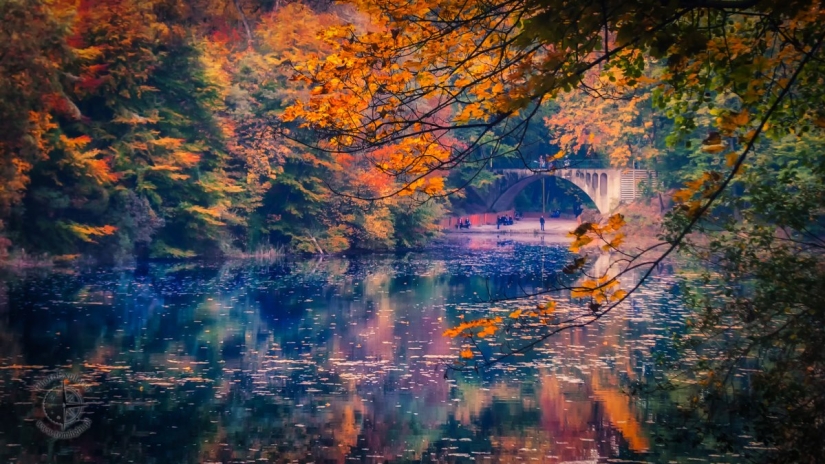 5. Emerald Lake in Szczecin (Poland) gets its name from the color. The emerald shade of the water is due to the high content of calcium carbonate, which is formed as a result of the breakdown of calcite. The lake is located right on the site of an ancient mine of chalk and marl. During mining, on July 16, 1925, the miners reached a layer of sand, from which water began to ooze. The mine was partially flooded, and the remains of mining equipment can still be found at the bottom of the lake. Fortunately, all the workers managed to escape during the flood. (Photo: Tomasz Przywecki/Flickr.com).
5. Emerald Lake in Szczecin (Poland) gets its name from the color. The emerald shade of the water is due to the high content of calcium carbonate, which is formed as a result of the breakdown of calcite. The lake is located right on the site of an ancient mine of chalk and marl. During mining, on July 16, 1925, the miners reached a layer of sand, from which water began to ooze. The mine was partially flooded, and the remains of mining equipment can still be found at the bottom of the lake. Fortunately, all the workers managed to escape during the flood. (Photo: Tomasz Przywecki/Flickr.com).
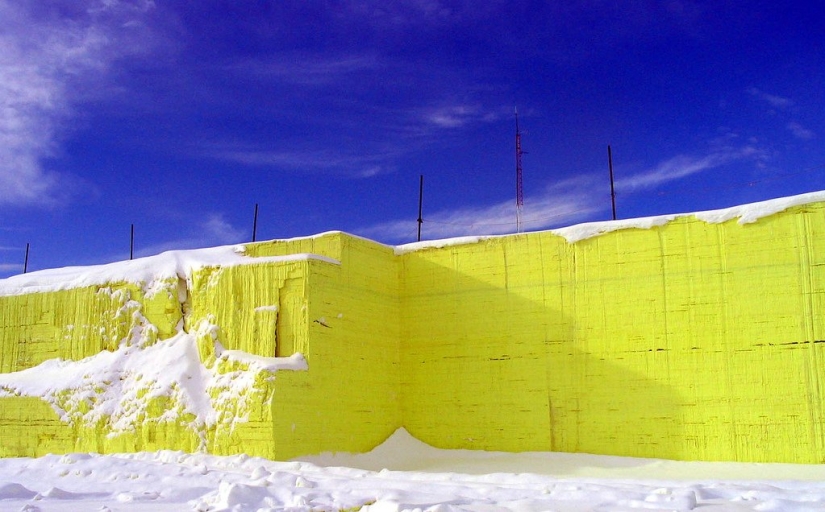 6. This huge yellow mountain is not the beginning of the construction of the pyramid, but a dump formed as a result of the extraction of oil sands. The by-product of this process is sulfur, which miners don't quite know what to do with. Syncrude employees came up with a brilliant idea: to make an unusual, but very attractive pyramid out of sulfur. (Photo: Gord McKenna/Flickr.com).
6. This huge yellow mountain is not the beginning of the construction of the pyramid, but a dump formed as a result of the extraction of oil sands. The by-product of this process is sulfur, which miners don't quite know what to do with. Syncrude employees came up with a brilliant idea: to make an unusual, but very attractive pyramid out of sulfur. (Photo: Gord McKenna/Flickr.com).
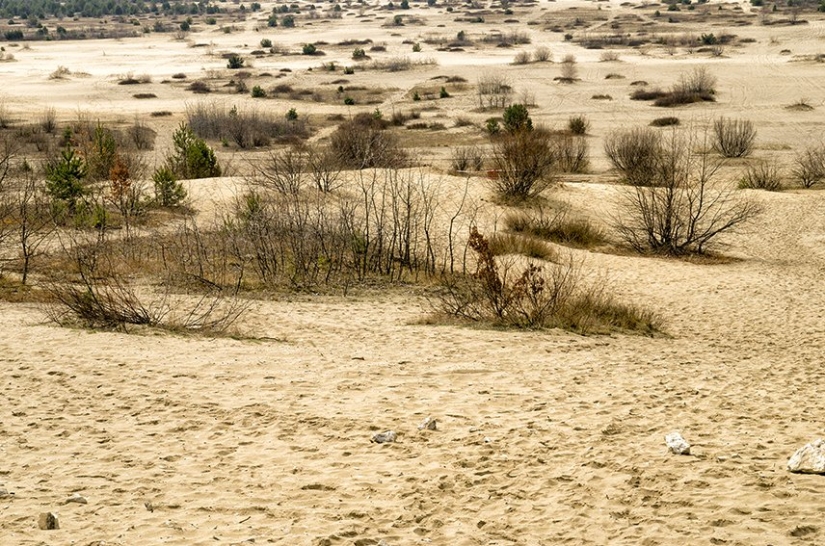 7. Пустыня в центре Европы? Пустыня Блэндовска (Błędowska) — огромная территория летучих песков, площадью в 33 квадратных километра (а в худшие времена 150 квадратных километров), которая лежит на границе Силезской возвышенности и Отцовского плато в Польше. Образовалась она в результате деятельности человека, в том числе из-за вырубки лесов и развития горнодобывающей промышленности и металлургии. Уровень грунтовых вод там упал так низко, что растения перестали расти. (Фото: Dominique Cappronnier/Flickr.com).
7. Пустыня в центре Европы? Пустыня Блэндовска (Błędowska) — огромная территория летучих песков, площадью в 33 квадратных километра (а в худшие времена 150 квадратных километров), которая лежит на границе Силезской возвышенности и Отцовского плато в Польше. Образовалась она в результате деятельности человека, в том числе из-за вырубки лесов и развития горнодобывающей промышленности и металлургии. Уровень грунтовых вод там упал так низко, что растения перестали расти. (Фото: Dominique Cappronnier/Flickr.com).
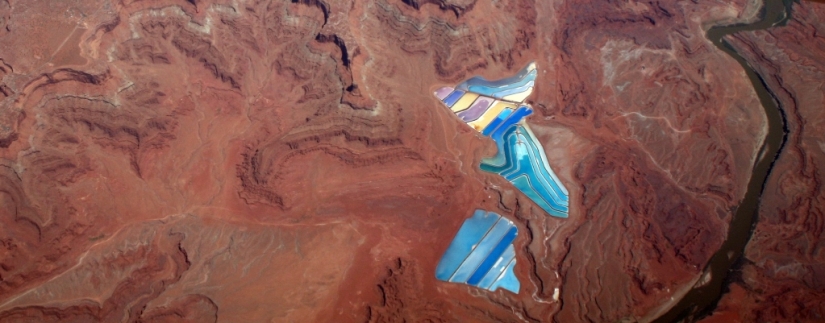 8. These unusual, colorful lakes right in the middle of the mountains in the US state of Utah are the so-called evaporation reservoirs. They are used to gradually evaporate water during the production of potash (potassium carbonate), which is used today mainly in the production of fertilizers. (Photo: Doc Searls/Flickr.com).
8. These unusual, colorful lakes right in the middle of the mountains in the US state of Utah are the so-called evaporation reservoirs. They are used to gradually evaporate water during the production of potash (potassium carbonate), which is used today mainly in the production of fertilizers. (Photo: Doc Searls/Flickr.com).
Keywords: GATES OF HELL | NATURE | RIO TINTO | THE MOST BEAUTIFUL LAKES | NATURAL WONDERS
Post News ArticleRecent articles

These hand-painted photographs of old Japan teach a history lesson about how life went on there in the Land of the Rising Sun at ...

We have electric kettles in almost every kitchen. We use this household appliance not only at home, but also at work. It's hard to ...
Related articles

Sandy beaches grey, brown or even white shade is quite usual for us. Even rocky beaches with sharp cliffs that attract the bravest ...

The world community was shocked when in 2007 a dirty naked woman was found in the Cambodian jungle, who did not speak, could not ...

Polish photographer David Kashlikowski took amazing pictures of a glacier in the Karakoram mountain system in Pakistan from a ...

His work straddles the line between candor and high art. Stephane Coutelle has long been one of Europe's most recognizable ...